Advantages and Disadvantages of Probability SamplingUsing an approach based on probability theory, the researcher selects samples from a broader population using the probability sampling methodology. A participant must be chosen at random for them to be considered as a probability sample. The most crucial need for sampling techniques is that each person in your population has a fair and predictable chance of getting selected. By selecting a small sample of individuals at chance from a larger population, probability sampling attempts to ensure that each response will then be representative of the entire population. There are various types of probability sampling that not only simplify our work but also make result calculation more convenient. Simple Random SamplingAs the name implies, simple random sampling is a completely arbitrary way of picking the sample. Using an automated procedure, randomly choosing individuals from the sample by assigning them numbers is how this sampling technique works. The numbers that were chosen comprise the sample's constituents. 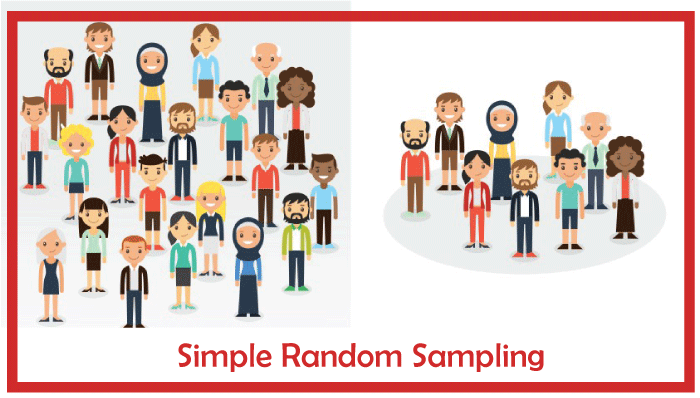
Simple random sampling is indeed a simple sampling technique that is readily integrated into more sophisticated sampling techniques. Each specimen has the same chance of being picked, which is the key characteristic of this sampling technique. To properly use simple random sampling, the sample size for this sampling technique should preferably be greater than a few hundred. They claim that although this strategy is straightforward to grasp in theory, it is challenging to put into practise. Choosing a reasonable sampling frame can occasionally be difficult when working with big sample sizes. Stratified Random SamplingWith stratified random sampling, the researcher separates a larger population into more manageable groups that often don't overlap but yet accurately reflect the overall population. Before sampling, divide the sample into these categories, and then randomly select a sample from each category. 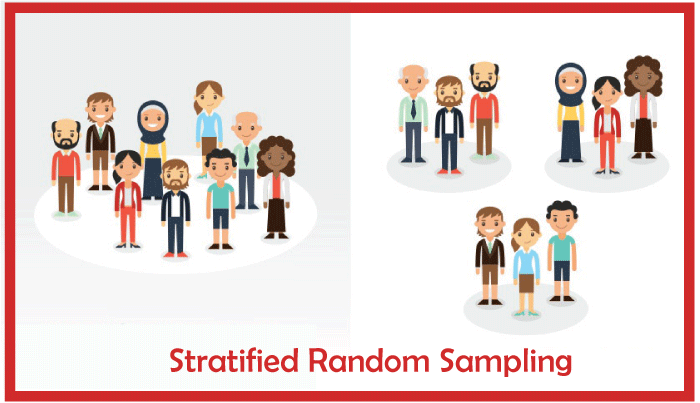
Its normal practice to group or categorise items according to gender, age, ethnicity, and other considerations. Putting subjects into mutually exclusive categories, then picking people at random from each group. To guarantee that each member of the group has an equitable chance of being selected using simple probability, the persons in these groups need to be distinct from one another. Another term for this sampling technique is "random quota sampling." Random Cluster SamplingThe technique of segmenting the target audience into groupings known as clusters is known as cluster sampling. The sample is then chosen at random from among these categories. Cluster sampling seems to be an effective method for examining big, geographically scattered populations. It frequently involves already-existing groups that are comparable to one another in some manner (e.g., departments in a school). Cluster SamplingThe method is frequently applied in statistics when it is impossible for the researcher to gather data from the full population. It is the most affordable and sensible choice for researchers doing research. 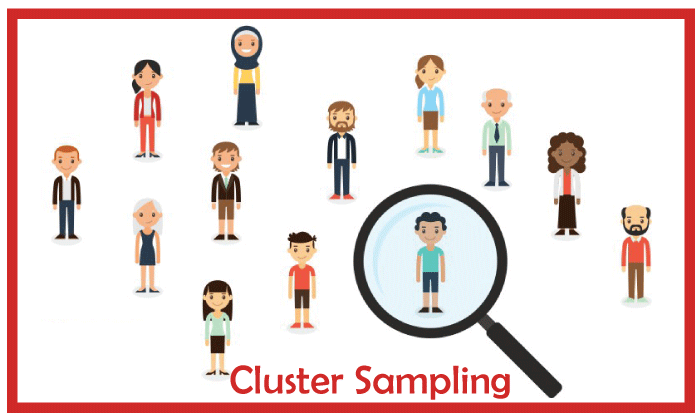
Consider a researcher who wants to comprehend how people in Germany use their smartphones. In this scenario, clusters will emerge among German cities. This sampling technique is also used to infer characteristics of a community in circumstances like war and natural disasters where it is hard to obtain information from every member of the population. Systematic SamplingA random sample is taken from the target population through the systematic selection of units at predetermined intervals beginning at a random point. This method is useful when you already have information about your target audiences, such as customer lists for agencies, student enrolment lists for universities, or employee data for businesses. Any of these can be used as a model frame. 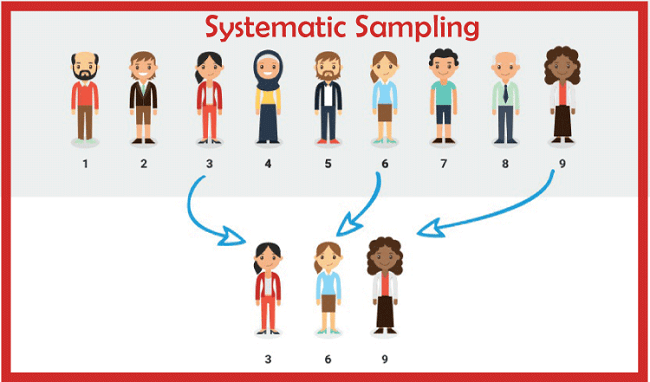
An expanded version of the well-known probability strategy, systematic sampling involves selecting a representative sample from the entire group on a regular basis. Each person in a group does have an equal probability of getting picked using this sampling approach. When should probability sampling be used?1. While reducing sampling bias This sampling technique is employed when bias must be kept to a minimum. The reliability of the inference drawn from the study is greatly determined by the sample choice. The calibre of a researcher's conclusions is primarily determined by how they choose their sample. Because probability sampling offers a fair representation of the population, the results are of greater quality. 2. In the presence of a diverse population This technique is widely used by researchers because it enables them to produce samples that accurately reflect the population. Consider how many individuals choose to receive medical care abroad over doing it at home. To more accurately reflect the general population, this sampling technique will aid in selecting samples from diverse socioeconomic strata, backgrounds, etc. 3. For the creation of an accurate sample The use of probability sampling aids in the creation of precise population samples by researchers. To create a specific sample size and collect well-defined data, researchers employ tried-and-true statistical techniques. 4. Statistical analysis The process of quantitative research is the collection and interpretation of numerical data. It may be applied to find trends and averages, develop hypotheses, look into causes, and extrapolate findings to larger groups. Advantages of Probability Sampling
1. Cost and time effective This method saves money and time and allows for the selection of a bigger sample by first assigning numbers to the tests and then selecting random data from the larger sample. 2. It is easy and uncomplicated. Probability sampling is a simple method of sampling since it doesn't need a difficult procedure. It is rapid and efficient. Thus, the time saved may be applied to data analysis and conclusion-making. 3. It is not technical Due to its simplicity, this sampling technique doesn't require any technical expertise. It is not very long and doesn't call for complex knowledge. 4. Lack of bias probability sampling should eliminate any signs of bias. Each member of the vast population group has the same likelihood of being picked since the people who form the subgroup of the bigger number are selected at random. Most of the time, this results in a balanced subset with the best chance of accurately reflecting the wider group in its entirety. 5. Lower level of judgement The procedure of probability sampling is made more efficient and reliable by the random trend used when allocating the number to a population item. Disadvantages of Probability Sampling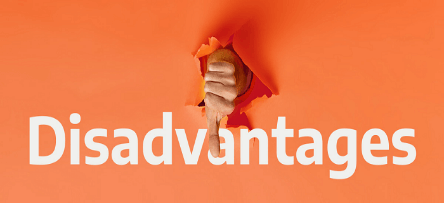
1. Chances of just choosing a certain class of samples If a researcher is hired to gather information on any family-related statistics, there is a good likelihood that he or she will start counting from the oldest to the youngest member and the numbers will only be rising or falling. Only the oldest or most recent generations will be used as samples in this situation. 2. Superfluous and tedious work There is a potential that the surveyor may become bored because of the repetitious tasks required to allocate the numbers and collect the data, which will lower the system's efficiency. 3. Lack of use of new information It ignores any further information that the population may have. |
 For Videos Join Our Youtube Channel: Join Now
For Videos Join Our Youtube Channel: Join Now
Feedback
- Send your Feedback to [email protected]
Help Others, Please Share










